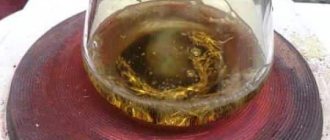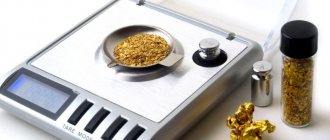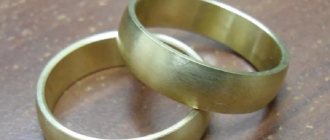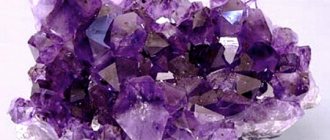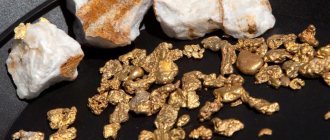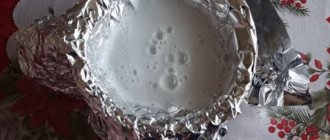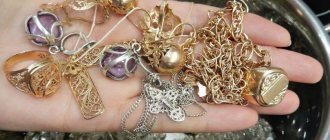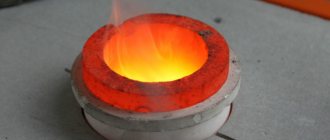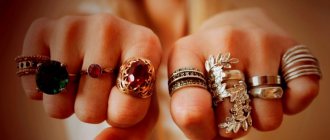Precious stones are used for more than just jewelry. Purchasing them is a popular way to invest your earnings. The price of diamonds, sapphires, emeralds and rubies remains consistently high, and the stones themselves can be stored for many years and passed on by inheritance. To make jewelry more accessible, scientists are developing and improving technologies for producing synthetic jewelry stones. Some jewelry lovers are also looking for ways to grow diamond and other crystals at home.
Gemstone production technologies
The first attempts to make artificial gems date back to 4000 BC. e. These were beads covered with blue enamel, imitating lapis lazuli. Later, analogues of precious stones were made from colored glass, then from plastic. The first experiment, as a result of which scientists managed to grow the mineral, dates back to the 19th century. In his laboratory, the Frenchman Marc Gaudin obtained small crystals of ruby, trying to reproduce natural crystallization processes.
Modern scientists have access to all the knowledge of their predecessors, precision instruments and installations capable of creating very high temperatures and pressures. Chemists and physicists practice many methods to produce synthesized stones, including diamonds. The basis for obtaining them can be:
- melts;
- solutions;
- gaseous media.
Accordingly, a crystal can be grown either by transforming the original solid or by creating a sample from the liquid or gaseous phase.
One of the most complex technologies is obtaining diamonds. The development of methods for its synthesis was based on the fact that diamond has the same composition as graphite. But getting one substance to change into another is not easy. To make a diamond, a temperature of 1600 ℃ or higher and a pressure of about 110,000 atmospheres will be required. There are untested folk methods for producing diamonds from graphite at home using electricity or explosives, but the likelihood of their successful use tends to zero.
To achieve jewelry quality from the resulting diamond, an even more complex industrial technique will be required, the specifics of which manufacturers do not disclose.
For the first time, gem quality stones were obtained in 1970 in America.
The safest method that can be tried to grow a diamond outside the laboratory requires the use of the following components and equipment:
- pencil lead;
- the wire;
- liquid nitrogen or water;
- voltage source.
Each end of a piece of graphite must be wrapped with wire and the lead must be frozen in liquid nitrogen. If liquid nitrogen is not available, you can place the workpiece in a container of water and freeze it. The next step is to connect the ends of the wire to a voltage source and conduct current through the lead. As a result, graphite should turn into diamond, that is, acquire its hardness.
Financial side of the issue
Now let’s estimate how much diamond jewelry made from artificial diamonds will cost. Many people underestimate the importance of these stones, and yet their price is sometimes higher than their natural counterparts. There are several reasons:
- visually they are indistinguishable;
- they have no inclusions, which is called “pure water stone”;
- they are stronger because they do not have cracks;
- their color does not fade;
- they are less whimsical.
The cost of stones depends on their weight, quality of cut and creation method. The most common zirconium dioxide (the most famous name is cubic zirconia) costs only 1.5-6 dollars per carat. But the cost of moissanite ranges from 75 to 155 dollars.
Organic salts
To synthesize crystals from solutions, organic salts are used as a base. From these substances, called alum, Marc Gaudin obtained ruby crystals. To do this, he fused potassium and aluminum sulfate with potassium chromate.
Using some of the substances, chemistry enthusiasts grow crystals on their own. For example, at home, beautiful bright blue crystalline formations are obtained from copper sulfate . In addition, to independently grow minerals of various colors, you can use:
- potassium chloride;
- inkstone;
- nickel sulfate;
- potassium alum;
- Mohr's salt;
- potassium nitrate and some others.
When choosing a suitable reagent, take into account that it must meet the following requirements:
- dissolve in water or other solvent;
- be stable to temperature increases;
- does not pose a health hazard when used correctly.
The technique for growing crystals from organic salts is based on the preparation of supersaturated solutions followed by crystallization in an open container. The process of obtaining a beautiful “stone” takes more than one month and consists of several key steps.
Preparation of mother liquor
This stage includes a number of actions:
- Pour 700–800 ml of sufficiently hot water, the temperature of which is 50 ℃, into a 1 liter heat-resistant glass.
- Gradually - 1 tablespoon at a time - add the selected substance and mix the composition until the powder is completely dissolved.
- When the solution becomes saturated, that is, the substance stops dissolving, add another 2 tablespoons and leave for 24 hours.
- To prevent foreign particles of dust from getting into the liquid, the container can be covered with a sheet of filter paper.
Obtaining the seed
Includes several steps:
- First, you will need to pour the resulting liquid into a heat-resistant flask, passing it through a filter, and add 1 teaspoon of a substance, which can be the crystals that precipitated in the initial solution.
- In order for the substance to dissolve, it is recommended to heat the container in a water bath at a temperature no higher than 60–70 ℃.
- Rinse a clean container with boiling water so that it heats up to the same temperature as the solution, and pour the liquid into the container.
- Wrap the container in a cloth, such as a towel, cover with filter paper and let cool.
- When the composition becomes cool, small crystals form on the bottom and walls of the glass, from which you need to choose one, which will become the basis of the future “jewel”.
Getting the stone
The single crystal will be grown from the obtained seed:
- The sample you like should be tightly wrapped with thread or fishing line.
- The other end of the thread can be wound around a stick or pencil, which will serve as a support.
- Place the seed in a glass with a solution at room temperature.
- The crystal grows gradually; during this period it cannot be pulled out or turned. If the liquid evaporates, exposing the “stone,” you will need to add more solution.
- After the crystal reaches the desired size, it should be carefully removed and placed on a napkin.
Sometimes grown samples are subject to weathering, that is, they are destroyed by evaporation of the crystallization liquid and turn into powder. They can be preserved in paraffin or under a layer of vegetable oil.
Some experts recommend covering the surface of the crystal with 2 layers of clear varnish
A short excursion into the properties of rocks
Until the 17th century, no one suspected the similarities between coal, diamond and graphite. They never coexisted in nature. Moreover, scientists could not imagine the transformation of one substance into another. Everything changed when the English chemist Tennant conducted his experiment and found out their true nature.
Visually, it was not possible to understand this, since the breeds are completely different. Graphite does not have strong bonds and consists of flakes sliding over each other. Its main application is as a lubricant to reduce friction between surfaces. Externally, it looks like molten metal.
The coal composition includes small particles of graphite, but is supplemented with a hydrocarbon compound, oxygen and nitrogen, which gives it a denser rather than liquid-viscous form. Diamonds, in general, have one of the strongest compounds in nature. Externally, these are transparent stones, completely different from their “brothers”.
Auguste Verneuil method
At the end of the 18th - beginning of the 19th centuries, a scientist from France, Auguste Verneuil, developed a new method for producing artificial rubies, also called “melting in a flame.” This method marked the beginning of the stage of industrial synthesis of precious stones. They began to be used not only in jewelry, but also in the production of watches, measuring instruments and for other technical purposes.
Verneuil designed and tested a structure consisting of an oxygen-hydrogen torch, a powder dispenser from which the gem would be synthesized, and a ceramic base. In such an oven, a crystal 40–50 mm long can be grown in 3–4 hours. Depending on the chemical composition of the powder, stones of various colors are obtained, as well as their star-shaped varieties.
However, it will not be possible to grow a diamond at home using this technique; as a rule, corundums (rubies and sapphires) and spinel are synthesized this way. The Verneuil device produces synthetic titanite strontium and rutile, which can compete with diamonds in brilliance, but are less hard. High-quality imitation diamonds are also garnetites, lithium niobate and cubic zirconia.
Alternative names in science and common people
In the scientific world, synthetic diamonds are named after the technology involved in their production. There are HPHT diamonds, which means created under high pressure and temperature. And CDV diamonds stand for chemical vapor deposition. We will tell you about the technologies themselves further.
But artificial diamonds are not always its complete copy. There are such types as cubic zirconia, moissanite, rhinestone, ferroelectric, rutile, fabulite and cerussite. Zirconium dioxide is the most common “fake” and has nothing in common with a real diamond.
Ignorant people call an artificial diamond a cubic zirconia, which is a big mistake. Of course, it perfectly imitates diamond due to its strength and refraction. Some experts cannot “by eye” distinguish it from the original stone. Therefore, they are widely used in the jewelry industry.
Device for working at home
To master the cultivation of precious stones at home, you will need to assemble a device using a Verneuil sample, or purchase a ready-made one. The device must include:
- a mechanism that ensures the gradual flow of substance into the hopper and then into the burner;
- muffle;
- cathetometer;
- 2 separate oxygen and hydrogen supply systems;
- crystal holder and its lowering mechanism.
Depending on the chosen substance, you can grow stones of different colors:
- cobalt oxide - blue and green;
- iron oxide - pink;
- vanadium oxide - green and gray.
The power consumption of the device is about 3 kW. To produce a synthetic ruby weighing 5–6 g, it will take approximately 3 hours, 0.2 g of chromium oxide and 6 g of aluminum oxide powder.
Areas of application and opportunities
About 80% of created diamonds are used in industry and other areas of human life. For example, the production of bearings, tips for drills. Small pebbles can be used to make diamond chips and powder, which are used to coat knives or grinding tools.
Synthetic diamond plays an important role in electronics. They are used to create needles and layers in microcircuits and counters to maintain thermal conductivity and resistance. And this is only an approximate market where high-quality artificial stones can be sold.
For the production of CVD diamonds, the most important role is played by high-tech areas. They are necessary to create mobile phones. They are used to produce laser beams used in medicine: they are used to treat many deadly diseases. Therefore, the role of synthetic stones is enormous.
How to grow diamonds at home
The cultivation of “analogs” of diamonds can be organized using sugar or salt available in any kitchen. To start the experiment you will need:
- distilled or boiled clean water;
- salt;
- thread or fishing line;
- pencil.
The process consists of the following steps:
- To create a supersaturated solution: gradually add salt to water at room temperature and stir until the grains stop dissolving.
- Wind the thread around the pencil so that its end does not reach the bottom of the container. Dip the thread into the liquid.
- After a few days, the thread will be covered with crystals. You need to select the largest sample, attach it to a new thread and lower it into a filtered solution.
- Gradually the “diamond” will increase. If water stops covering the diamond, you need to make a supersaturated solution and add it to the container with the sample.
If you add food coloring to the solution, you can grow multi-colored crystals. Since all the substances used in the experiment do not pose a threat to health, you can grow a diamond from a salt or sugar solution together with your children.
Optical properties and color of synthetic diamonds
A cultured diamond has the widest spectral range of any known material, from ultraviolet to far infrared and microwave. In combination with mechanical and thermal properties, diamonds are ideal for the production of laser optics and laser applications.
Diamonds can be found in every color imaginable with countless shades, tones and saturation levels. The color comes from inclusions at the atomic level trapped in the crystal lattice of the stone.
Tips for home experiments
To increase the likelihood of successfully creating a diamond with your own hands, you will need to follow some recommendations:
- take distilled water - there should be no impurities in the liquid;
- When working with chemicals, you must use gloves and special utensils;
- the laboratory filter can be replaced with gauze, cotton wool or paper;
- the water for the solution should be warm, but not very hot;
- in the room where the container will be placed, a constant temperature must be maintained, without sudden changes, otherwise the crystal will grow quickly, but will be fragile;
- when adding a new solution, its temperature and the temperature of the main one must be the same;
- When growing transparent crystals, you should not rush - with accelerated growth they become cloudy.
Synthetic jewelry stones have all the advantages of natural analogues. Moreover, laboratory-produced diamonds have even greater hardness and purity. Scientists have not yet come up with inexpensive and accessible ways for everyone to obtain gems at home, so jewelry lovers can grow beautiful multi-colored crystals from salt or sugar solutions and create their own collection from them.
Laboratory crystals: fake or full replacement
Calling synthetic diamonds a copy is incorrect. Rather, it is the same mineral produced in different ways. It's worth noting that the only differences between them is the way they appear. In one case, stones are born in nature, in the other, people have a hand in their creation.
An artificial stone produced in a laboratory acquires all the properties of a “real” stone:
- strength;
- structure;
- shine;
- refractive index;
- specific gravity;
- thermal conductivity;
- resistance.
But there is one difference between artificial diamonds - the complete absence of defects. This makes them an ideal material for industrial and jewelry purposes.
It is curious that only 20% of diamonds mined in nature can be used to create jewelry. Other stones have microcracks, inclusions and clouding. When using high-quality technologies, it is difficult to distinguish a natural mineral from an artificial one, even with laboratory equipment.
From jewelry to industry
Jewelry diamonds are a lucrative part of NDT's business, but tomorrow belongs elsewhere. NDT technical director Alexander Kolyadin likes to say: “If nothing else can be made from a diamond, make a diamond.” In fact, the most promising market for large, high-quality synthetic diamonds is industry. “Not a single natural diamond is suitable for use in special optics or electronics,” says Alexander Kolyadin. - They have too many defects. And the plates cut from our diamonds have an almost perfect crystal lattice. Some research organizations to whom we provide our samples for study can hardly believe the measured parameters - they are so perfect. And not just individual samples - we can confidently ensure repeatability of characteristics, which is vital for industry. Diamonds are heat sinks, they are windows for special optics and for synchrotrons, and, of course, power microelectronics, which are now being developed all over the world.”
“The industrial sector currently accounts for 20% of our production, but in three years we plan to increase it to 50%, especially since demand is growing rapidly. Now we mainly make 4 x 4 and 5 x 5 mm plates, we have cut out a few 7 x 7 and 8 x 8 mm and even 10 x 10 mm plates to order, but this is not mass production yet. Our next goal, says Nikolai Khikhinashvili, is to move on to the production of inch diamond plates. This is the minimum that is in great demand in the mass electronic and optical industry. To obtain such plates, you need to grow a diamond crystal weighing one hundred carats. This is our plan for the near future." “For a decade?” — I clarify. Nikolai looks at me with great surprise: “A decade? We're going to do it before the end of the year."
vote
Article rating
